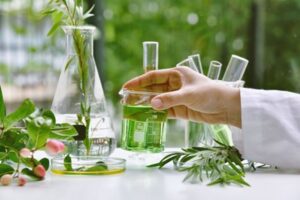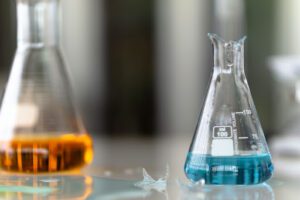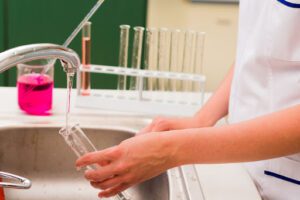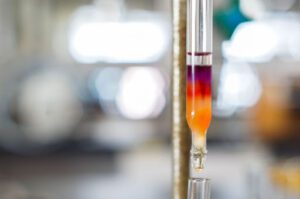
01
Sep '22
Top Reasons to Use Safety Coated Glassware
Safety-coated glassware solves one of the most exasperating and more dangerous problems that researchers encounter in a lab. It’s often easy to knock a glass bottle over on accident, which results in waste, shattered glass, and setbacks in the scientific process. Safety-coated glass bottles are less likely to shatter and become a safety hazard, and, in some cases, you can salvage the contents of safety-coated glassware when it does break.
At-Mar Glass sells products with a safety coating that makes lab work much safer. Here are some reasons to consider glassware that comes with plastisol coating.
Slip Resistance Reduces Accidents
Glass is ideal for many chemicals, but it’s much more slippery than other materials. When working with glass, it’s easier to tip the container over accidentally or drop it due to poor traction. Breaking a glass container is hazardous because the pieces of glass in the lab require proper disposal so that others aren’t injured.
Safety-Coated Glassware is More Durable
If a bottle is dropped, having a safety coating can increase the chance that it won’t shatter. This allows research to continue largely uninterrupted, even if there’s an occasional mishap. When creating chemical reactions within a glass container, shatter resistance protects the workers in a lab not only from broken glass but from chemicals that could harm them on contact as well.
Scratch and Chemical Resistance
Glass is the material of choice for lab experiments because it doesn’t react with the chemicals used to produce compounds within the container. The result is a product that is easier to grip, doesn’t shatter as easily, and maintains its scratch and chemical resistance. It’s crucial to maintain this chemical resistance when using safety-coated glassware, which is why the coating is only applied to the outside of the container.
Ability to Salvage Contents
The coating on safety containers, such as a wide mouth beaker, protects the glass when it breaks. Instead of shattering, the glass may crack or splinter. The person using the contents of the container has more time to save the material, which can save time if it requires a complicated process to produce. It also reduces waste and the cost of running experiments.
See-Through Coating
When experimenting with rotary evaporator glassware, it’s customary to wrap the glass in netting or tape to keep glass shards contained in the event of an explosion. Glassware with a protective coating can contain broken glass while allowing you to still observe the contents that are inside.
Order Safety-Coated Glassware Today
Our team offers safety-coated glassware tailored to your specific needs upon request. For more information about our glassware, including everything from solvent distillation apparatuses to glass gas bubblers, reach out to our team today.
Share:
Latest Post


Tips for Safely Disposing Broken Laboratory Glass

How to Properly Clean Laboratory Glassware

